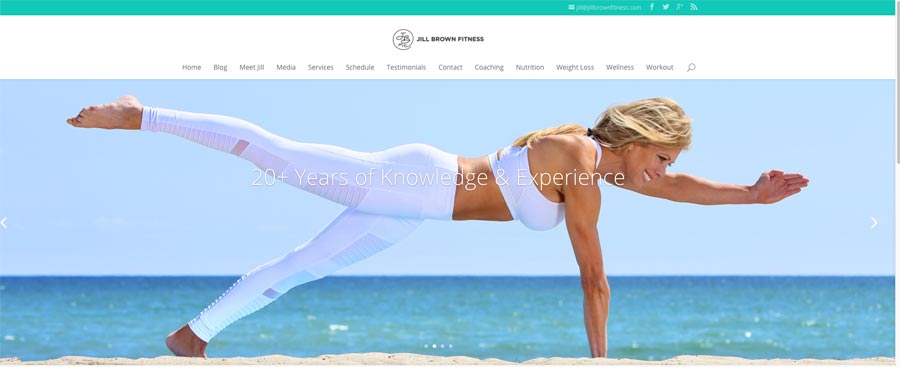770-648-1331
Image: University of Texas Communication Design Blog
Part 1 of this series explains the importance and value of developing and defining your Personal Trainer or Fitness Brand. Your Brand Identity includes your business name, logo, images, tagline, elevator pitch, one paragraph description and a 3-5 paragraph story about you. All of these elements build trust, reveal your authentic self and help your clients and fans refer potential new clients. They are also components of your website.
Your digital marketing efforts will require time and financial investments, but are necessary steps to increase exposure and build your personal training business. Make it count with quality design and thoughtful content. If someone is referred to you your website could be their first impression of you. Clean, uncluttered design with a pleasing palette is powerful and enables a positive experience for your visitor. Too many elements and a cluttered design will distract and is un-inviting. Keep it simple but convey your essence.
Your website is where a potential client can learn about:
You, your background and integrity
Services and fees
How you can help them
Contact information
How to connect on social.
Client testimonials
Like most things, you get what you pay for when it comes to website design and development. If you have some experience with web coding and graphic design, WordPress is recommended. WordPress is a content management system (CMS). CMS’s like WordPress are powerful but have a learning curve. Hiring an experienced designer/programmer is well worth the investment. Consider the potential to trade or barter with a designer. DIY Website builders like Wix and Squarespace are less powerful but easier to use.
You will need to write a bio or story about why you became a personal trainer…what inspires, motivates and your purpose-driven goals. Include any information that helps others get to know and trust you. Here you can include past experience and resume highlights. Most of us are not experienced writers so don’t hesitate to hire a professional. You can get all the facts down in a draft and then pass to an experienced writer for the final content. Images and videos of you training clients will contribute to your visual storytelling.
In addition to your bio or “story” graphic design, images and video make up your visual storytelling components. Visuals, including videos, deliver an abundance of information within a few seconds. They trigger the emotional component and a lasting impression. Visuals are more powerful than words.
Visual elements should be of high quality. If someone visits your website before meeting you it will be their first impression of you. Ideally you want the quality of your marketing materials to match the quality of your services.
A blog will contribute on-going value as it increases your website SEO ranking and traffic, can build your reputation as an expert and become a growing library of valuable content helpful to your clients and fan-base. It is also ever-green content which means it lasts forever or as long as your website does, unlike social media content which has a very short lifespan.
Blogging helps to:
The following fitness professional websites are good examples to study:
Mark Fisher Fitness It’s super Creative, Inclusive and Fun.
Jill Brown Fitness It’s Clean + Beautiful design are inviting. The Emotional Impact: Conveys Strength and Experience

The Body Blueprint This full Home page video of the trainer working with clients is powerful!
Nicole Chaplin Her strong visuals and recognizable publications make an impact.
Natalie Uhling Fitness Displays clean minimalist design with large images and clear Call-to-Action.
Ulisses World Uses strong dynamic visuals that clearly depict bodybuilding.
Coach Adam Cobb In this dynamic video a client testimonial is used as visual story telling depicting the trainers integrity. It’s quite memorable and builds trust.